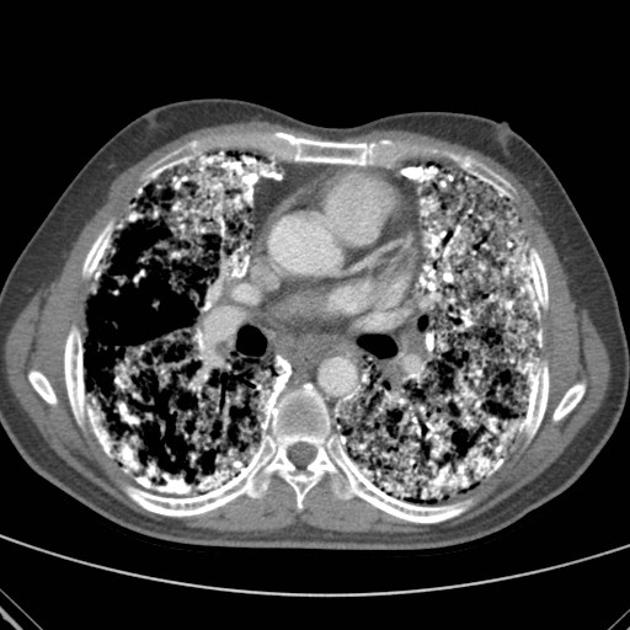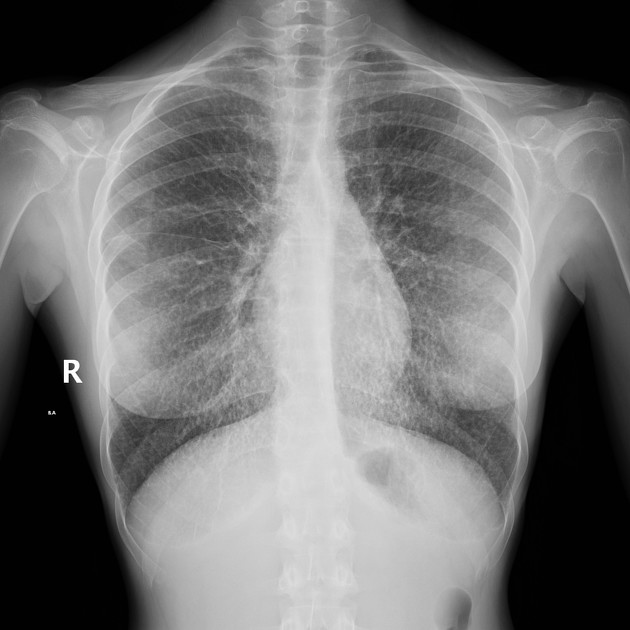Pulmonary alveolar microlithiasis is a rare idiopathic condition characterized by widespread intra-alveolar deposition of spherical calcium phosphate microliths (calcospherites).
On this page:
Epidemiology
A slight female predilection may be present in the familial form 2. Most cases are reported in Asia and Europe 9.
Associations
Clinical presentation
Often discovered incidentally on a chest radiograph. The radiographic features are frequently disproportionate to the clinical symptoms 5.
Pathology
Pulmonary alveolar microlithiasis is believed to be due to a mutation in the SLC34A2 gene that causes inactivation of a sodium-dependent phosphate cotransporter, which is found mainly in alveolar type II cells. This cotransporter normally clears phosphate from degraded surfactant, and when inactivated there is accumulation of phosphate in the alveolus, and calcium phosphate microliths are then thought to form 9.
An autosomal recessive inheritance pattern has been proposed given familial occurrence in a majority of cases 2,3,9. Usually, there is no abnormal calcium metabolism.
Location
The distribution of pulmonary alveolar microlithiasis is bilateral with a middle and lower zone predilection 2,3.
Radiographic features
The pattern in children differs from that in adults 2.
Plain radiograph
Chest x-ray typically demonstrates:
sand-like calcification distributed throughout the lungs
CT
HRCT better shows numerous sand-like calcifications throughout the lungs with subpleural and peribronchial distribution (typically ~1 mm) 8. Additional accompanying HRCT features include
crazy paving pattern 1,5
calcified interlobular septa (virtually pathognomonic) 1
small subpleural cysts/emphysema 1
ground glass opacities: tends to be more common in children 2
PET-CT
On occasion, PET may show high FDG uptake, but primarily in the lung regions that spare calcification 10.
Treatment and prognosis
No known treatment is available. Overall prognosis is good, but occasionally slow progression can result in an end-stage lung fibrosis requiring lung transplantation.
Differential diagnosis
Some consider the radiographic appearance to be pathognomonic 3.
Differential for fine granular densities includes
idiopathic pulmonary hemosiderosis: tend to be large nodular opacities; no calcification 1
pulmonary stannosis: deposition of tin dust
pulmonary baritosis: deposition of barium particles
mitral stenosis: may produce small foci of pulmonary ossification
See also
differential for small hyperdense pulmonary nodules
differential for miliary opacities
differential for crazy paving pattern
differential for ground glass densities


















 Unable to process the form. Check for errors and try again.
Unable to process the form. Check for errors and try again.